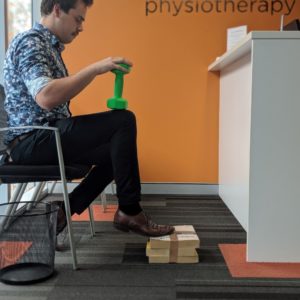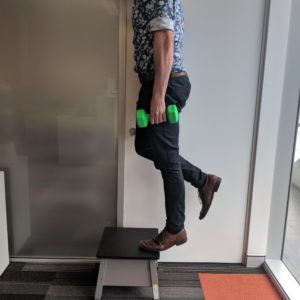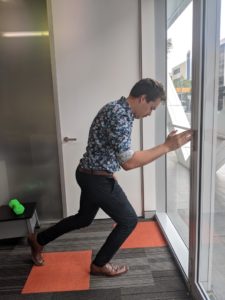Daylight saving is an amazing time of year and the weather over the past few weeks has been beautiful. If you’re lucky enough to catch one of my Pilates classes over the past few weeks you will have heard me mention my love of the sun and summer more than a tolerable amount. It seems I’m not the only one that feels this way, with a dramatic influx of patients reporting to the clinic with lower limb injuries due to a recent spike in running. The extra hour of sunlight of an afternoon seems to be being used well, if not a little too well with an increase in overuse lower limb injury presentations.
We are currently seeing a spike in lower limb overuse injuries such as; Patellofemoral knee pain, Medial Tibial Stress Syndrome (medial Shin Splints), Anterior Shin Splints, Achilles Tendinopathies, Plantarfaciosis, and (so far) one unfortunate Stress fracture.
One of the most common findings in a lot of these patient presentations have been significant calf weakness and/or poor calf endurance. Previously I had posted the normative data on single leg calf raise endurance. The results show that in healthy adults, on average males between the ages of 30-39 perform 32 repetitions of single leg calf raises, with female reaching 27 within the same age group. Unfortunately we are too often seeing people not meet even half of the average. Look below and see what your norm is. How Do you Measure up?
Herbert-Losier et al (2017):
| Male | Female | |
| 20-29yrs | 37 reps | 30 reps |
| 30-39yrs | 32 reps | 27 reps |
| 40-49yrs | 28 reps | 24 reps |
| 50-59yrs | 23 reps | 21 reps |
| 60-69yrs | 19 reps | 19 reps |
| 70-79yrs | 14 reps | 16 reps |
| 80-89yrs | 10 reps | 13 reps |
Why Train your Calves?
Prevention of Injury:
Weakness and poor muscular endurance of the plantarflexors (Gastrocnemius and Soleus) are risk factors in the development of Plantarfaciosis, Achilles Tendinopathy, Medial Tibial Stress Syndrome and Anterior Shin Splints, Calf Strains and tears. If that’s not enough reason to start increasing your calf endurance strength then consider that during running the Soleus muscle group produces 6-8x body weight of force, and the Gastrocs produce 1.5-2.8 body weight of force. This is a lot of force being produced and absorbed when you’re running, you will need to develop very strong calves to be resilient to injury.
Athletic Performance Enhancement:
A Study in 2017 studied the correlation between maximal single calf raise strength and sprint speed across a 30m track. The results of this study show a very significant correlation between calf 1RM (1 x rep max) strength and Sprint Performance.
If you’re not meeting your age group’s normative result, then I’ve got three exercises for you to start to perform as an injury prevention measure, and also for performance enhancement.
My three favourite Calf Strengthening Exercises, these are simple, effective and useful for you to start incorporating at least 1-2 x week.
Seated Bent Knee Heel Raise 3 x 10-15 repetitions:
- Sit on a flat bench and place a dumbbell on your upper left thigh above your knee.
- Place the ball of the foot on the block or step.
- Gradually lower the heel as low as possible and hold the bottom position for one second.
- Push upwards through the ball of your foot
Single Leg Heel Raise 3 x 10-15 repetitions:
- To perform this exercise correctly; you should imagine as you are going up onto your toes that your weight is going through your 1st and 2nd toes.
- Make sure you perform these repetitions with control and that you don’t roll outwards at the top of range of motion.
- Progression is to perform off a step and add weighted resistance.
Triple Extension 3 x 10 repetitions:
- Standing in a split stance with hands on the wall (as shown in the picture above)
- Your ankle, knee and hip will all be flexed
- Push through the ball of your foot, raising up onto your toes while simultaneously extending your knee and hip.
If you have been experiencing lower limb or foot pain, you will greatly benefit from a Physiotherapy assessment to address the root cause of the issue. Book in to see one of our Sydney CBD Sports Physio’s and treat the pain before it gets worse.








